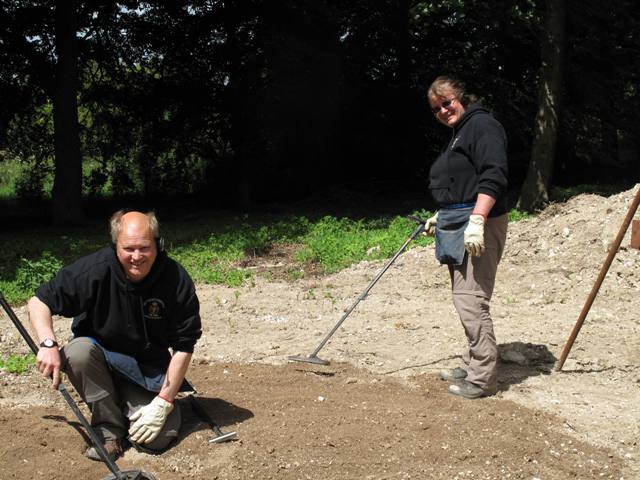It takes a whole team of people to make Operation Nightingale possible, from the archaeologists to the chef, and today I’m going to introduce you to the role of our metal detectorists.
We have been working with three experienced detectors on site; Geoff and Lesley from West Kent Archaeological Society and West Kent Detector Club, and Lieutenant Colonel Paul Marks who detected our first real find, the Anglo-Saxon disc brooch. The detector users perform the important job of scanning the trenches for signals before and during excavation, to give the archaeologists an idea of where metal finds will be buried. They also scan the spoil heaps to make sure that nothing has been missed by the diggers.
I managed to corner Geoff and Lesley today to ask them how they got involved and what they think of the project:
We were asked to help out with Op Nightingale by Diarmaid Walshe, one of the organisers of the project, who we know through the West Kent Archaeological Society. We were keen to take part as we enjoy working on archaeological digs, where we get the chance to detect many more historical finds at greater depth and in better condition than usual and to work on protected sites like this one.
Barrow Clump is our second Op Nightingale dig; we took part in the Caerwent excavation in March and found no less than 18 Roman coins and a number of artefacts including two parts of a Roman lock. We enjoy working with the soldiers and it’s a real privilege to be part of a project that is doing so much good.
Our finds at Barrow Clump have mainly been modern so far, including tin cans and a range of ordnance. We are confident that we will detect some more exciting finds before the end of the dig, and even help discover and excavate one of the skeletons.

To read more about the role of the metal detectors on the dig, follow Lesley’s reports on the West Kent Detector Club website (www.wkdc.co.uk).
To return to the main blog www.florence.opnightingale.co.uk/blog, click here.